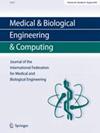考虑支架和加工点约束的基于医学图像的三维正畸线优化。
IF 2.6
4区 医学
Q2 COMPUTER SCIENCE, INTERDISCIPLINARY APPLICATIONS
引用次数: 0
摘要
在本文中,我们提出了一种新的正畸金属丝设计系统(OWDS),它允许医务人员在三维断层医学图像上设置支架的附着位置和方向。为了实现机器人对正畸金属丝的全自动化加工,提出了一种基于齐次变换的几何设计金属丝建模方法。提出了一种新的自定义线材优化设计算法,使线材长度最短,满足线材安装的约束条件。通过导线几何设计实例和数值实验,验证了该方法的有效性。本文章由计算机程序翻译,如有差异,请以英文原文为准。
Medical image-based 3D orthodontic wire optimization considering constraints at bracket and processing points.
In this paper, we propose a new orthodontic wire design system (OWDS) that allows medical staff to set the bracket attachment position and direction on a 3D tomographic medical image. To enable fully automated processing of the orthodontic wire by a robot, a method for modeling the geometrically designed wire based on homogeneous transformation is proposed. A new custom algorithm is proposed for optimal wire design, which results in the shortest length that satisfies the constraints required for wire mounting. Through case studies of wire geometry design and other numerical experiments, the effectiveness of the proposed method is verified.
求助全文
通过发布文献求助,成功后即可免费获取论文全文。
去求助
来源期刊

Medical & Biological Engineering & Computing
医学-工程:生物医学
CiteScore
6.00
自引率
3.10%
发文量
249
审稿时长
3.5 months
期刊介绍:
Founded in 1963, Medical & Biological Engineering & Computing (MBEC) continues to serve the biomedical engineering community, covering the entire spectrum of biomedical and clinical engineering. The journal presents exciting and vital experimental and theoretical developments in biomedical science and technology, and reports on advances in computer-based methodologies in these multidisciplinary subjects. The journal also incorporates new and evolving technologies including cellular engineering and molecular imaging.
MBEC publishes original research articles as well as reviews and technical notes. Its Rapid Communications category focuses on material of immediate value to the readership, while the Controversies section provides a forum to exchange views on selected issues, stimulating a vigorous and informed debate in this exciting and high profile field.
MBEC is an official journal of the International Federation of Medical and Biological Engineering (IFMBE).
 求助内容:
求助内容: 应助结果提醒方式:
应助结果提醒方式:


